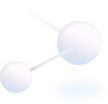更多科大概覽
With the development of financial markets, more and more complicated and advanced derivatives are designed to fit the market’s interests. There exotics products are often linked with multi-assets and under untraditional risk, e.g. correlation, credit-default-risk, etc. Also, as hedging instruments for exotic products can also be illiquid/exotic, hedging can be significant and has a great contribution to final PnL.
If we take all above into consideration, traditional approach of derivative pricing might fail as a lot of assumptions will not hold. At the same time, as we know the analytical solutions of derivative pricing under risk-neutral measure is an optimal solution of B/S PDE, which can also be solved numerically, this gives us the idea to utilize neural networks to conduct optimization to solve these kind of problems.
In this presentation, we will show that we can solve different types of derivative pricing based on back-propagation, starting from vanilla European style options. Also, we can see that a lot of important features of B/S pricing also hold by using NN pricing engine (e.g. vol smile, put-call parity, etc.) by introducing different objective function. In the end, we will talk about the potential of implementing more advanced NN structure to more complicated payoffs that are actually being traded in the market.
If we take all above into consideration, traditional approach of derivative pricing might fail as a lot of assumptions will not hold. At the same time, as we know the analytical solutions of derivative pricing under risk-neutral measure is an optimal solution of B/S PDE, which can also be solved numerically, this gives us the idea to utilize neural networks to conduct optimization to solve these kind of problems.
In this presentation, we will show that we can solve different types of derivative pricing based on back-propagation, starting from vanilla European style options. Also, we can see that a lot of important features of B/S pricing also hold by using NN pricing engine (e.g. vol smile, put-call parity, etc.) by introducing different objective function. In the end, we will talk about the potential of implementing more advanced NN structure to more complicated payoffs that are actually being traded in the market.
9月10日
6:00pm - 7:00pm

地點
Room 4472, Academic Building (near Lifts 25-26)
講者/表演者
Mr. Hongyu MAO
HKUST
HKUST
主辦單位
Department of Mathematics
聯絡方法
mathseminar@ust.hk
付款詳情
對象
Alumni, Faculty and Staff, PG Students, UG Students
語言
英語
其他活動

1月6日
研討會, 演講, 講座
IAS / School of Science Joint Lecture - Innovations in Organo Rare-Earth and Titanium Chemistry: From Self-Healing Polymers to N2 Activation
Abstract
In this lecture, the speaker will introduce their recent studies on the development of innovative organometallic complexes and catalysts aimed at realizing unprecedented chemical trans...

12月5日
研討會, 演講, 講座
IAS / School of Science Joint Lecture - Human B Cell Receptor-Epitope Selection for Pan-Sarbecovirus Neutralization
Abstract
The induction of broadly neutralizing antibodies (bnAbs) against viruses requires the specific activation of human B cell receptors (BCRs) by viral epitopes. Following BCR activation, ...

